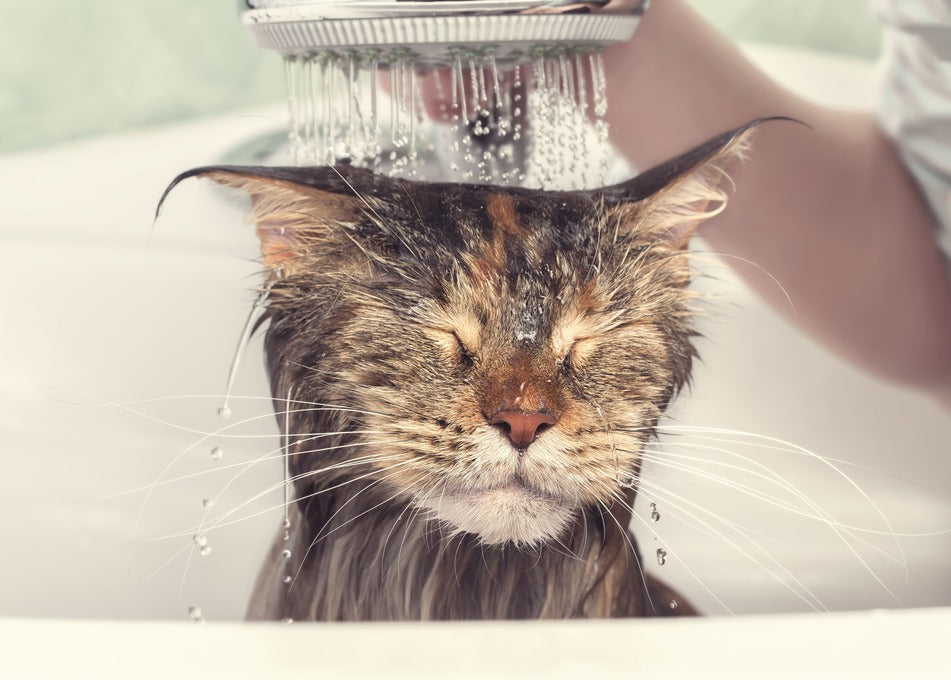How to Bathe Your Cat: A Step-by-Step Guide
Introduction
Bathing a cat can be a daunting task for many pet owners. Cats are known for their aversion to water and the potential for scratching and biting during the process. However, with the right approach and preparation, giving your cat a bath can be a stress-free experience for both you and your feline friend. In this blog post, we will provide a step-by-step guide on how to bathe your cat, including tips and tricks to make the process as smooth as possible.
Step 1: Gather Your Supplies
Before you begin the bathing process, make sure you have all the necessary supplies ready. These include cat-friendly shampoo, a large towel, a non-slip mat for the bottom of the sink or tub, a gentle brush, and treats for positive reinforcement. It is essential to use a shampoo specifically designed for cats, as human shampoo can be too harsh for their sensitive skin. Additionally, having all the supplies ready beforehand will help to streamline the bathing process and minimize stress for both you and your cat.

Step 2: Prepare Your Cat
Before placing your cat in the water, it is important to brush their fur to remove any tangles or mats. This will make the bathing process easier and more comfortable for your cat. Additionally, it is helpful to trim your cat's nails prior to the bath to minimize the risk of scratching. If your cat is particularly anxious about bath time, consider using a calming pheromone spray or diffuser in the bathing area to help relax them.
Step 3: Introduce Your Cat to Water Gradually
When it comes time to introduce your cat to the water, do it gradually. Start by filling the sink or tub with a few inches of lukewarm water. Gently place your cat in the water and use a cup to pour water over their body, avoiding their face and ears. It is important to speak to your cat in a calm and reassuring tone throughout the bathing process to help keep them relaxed.

Step 4: Shampoo and Rinse
Once your cat is in the water, apply a small amount of cat-friendly shampoo to their fur and gently massage it in. Be sure to thoroughly lather the shampoo, paying special attention to areas that may be particularly dirty or greasy. After shampooing, use a cup to rinse your cat with clean, lukewarm water, being careful to avoid getting water in their ears and eyes. It is important to be thorough in rinsing to ensure that no shampoo residue is left on your cat's skin, as this can cause irritation.

Step 5: Dry and Reward
After the bath, carefully lift your cat out of the water and wrap them in a large, absorbent towel, making sure to gently squeeze the towel against their fur to absorb as much water as possible. It's important to be gentle and avoid any vigorous rubbing to prevent irritation to their skin. Once your cat is mostly dry, allow them to finish drying off in a warm, draft-free area. Monitor your cat closely during this time to ensure they do not become too cold. Additionally, providing a cozy and warm environment will help them relax and dry off more comfortably. Finally, be sure to reward your cat with treats and praise for their cooperation during the bath, reinforcing positive associations with the experience and making them feel loved and appreciated. This positive reinforcement will help build trust and make future baths less stressful for both you and your cat.
Conclusion
In conclusion, bathing a cat can be a challenging task, but with the right approach and preparation, it can be a manageable and even enjoyable experience for both you and your feline friend. By following the step-by-step guide outlined in this blog post and remaining patient and calm throughout the process, you can help to make bath time a stress-free and positive experience for your cat. Remember, every cat is different, so it may take some trial and error to find the best approach for your individual pet. With time and practice, you can become a pro at giving your cat a bath, ensuring that they stay clean and healthy for years to come.




























